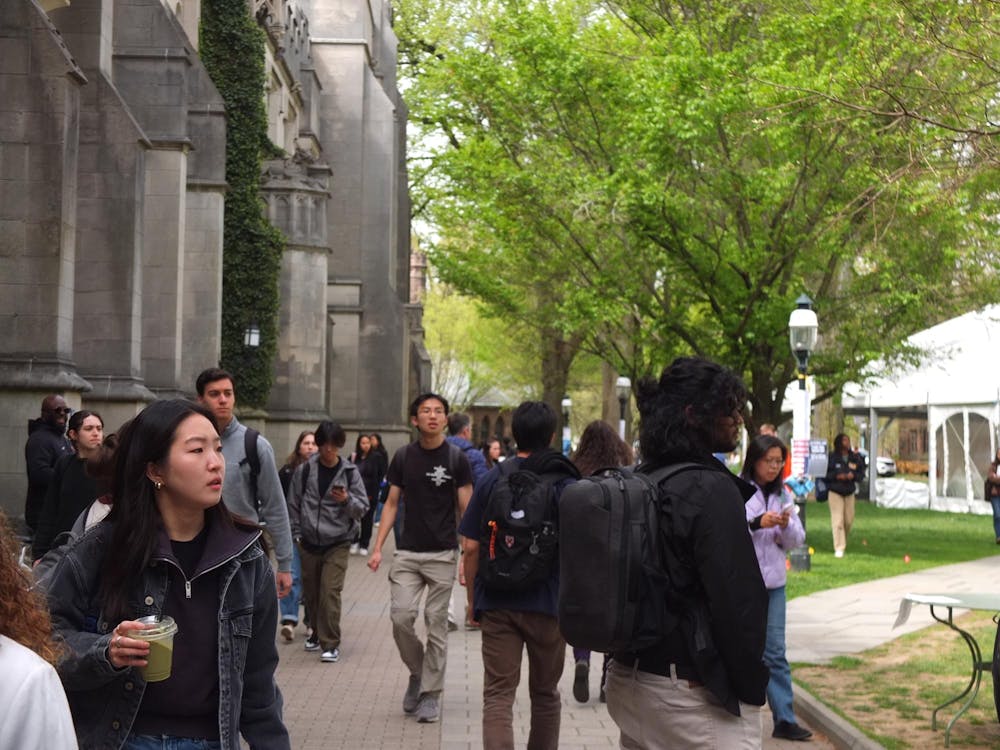Pending the end of the government shutdown, University neuroscientists may play a crucial role in pioneering new neurotechnologies through President Obama’s recent $100 million Brain Research through Advancing Innovative Neurotechnologies initiative. While the initiative was halted due to the shutdown, the Princeton Neuroscience Institute -- which oversees the Program in Neuroscience -- has the potential to benefit in many ways from this increase in neurotechnology funding.
The University already has ties to the initiative through PNI Co-Director and molecular biology professor David Tank, who is a member of the Advisory Committee to the Director of the National Institutes of Health BRAIN Working Group that authored an interim report released last month that outlines the goals of the initiative.
Unveiled this April, BRAIN aims to develop and apply new technologies with the purpose of showing how brain cells and neural circuits interact, according to the National Institutes of Health website.
Developing an understanding of the brain is one of the “great remaining challenges in science,” PNI Co-Director and psychology professor Jonathan Cohen explained. “There’s something that sits right in front of us that we use everyday and we’re using right now that remains an utter mystery,” Cohen stated. “That is, ‘How does the brain work?’ ”
Rather than targeting its impact on a specific neurological disease, such as Alzheimer’s, the goal of Obama’s initiative is to learn how to use technology, which can then be applied to a variety of brain studies, including medical applications, Tank explained. The initiative is supposed to focus on the development and application of new technologies to study the brain.
“Leveraging this new technology would facilitate a deeper understanding of how the brain works in both its normal state and in its diseased state,” Tank stated.
The NIH, National Science Foundation and Defense Advanced Research Projects Agency will be accepting applications for funding for research aligned with the initiative’s goals. The Working Group report outlines six high-priority research areas that would be considered for funding by the NIH: mapping the structure and components of circuits, neuronal dynamics, manipulating circuit activity, the importance of behavior and theory, modeling and statistical studies, Tank explained.
Tank and Cohen both noted that funding for neurotechnology is especially appropriate in light of many novel developments in the field, including research at Princeton.
“We happen to have a fair number of investigators here who work on these aspects of neurotechnology,” Tank explained, referring to the close relationship between the goals of the BRAIN initiative and those of Princeton research scientists.
The PNI also fosters the type of interdisciplinary work that the initiative encourages, Tank explained, which involves collaboration among departments such as mathematics, physics, engineering and economics.
“We have a group of faculty at PNI who do this anyway. And so, I think Princeton … certainly is going to have a representation of faculty doing work relating to the Obama BRAIN initiative,” Tank said, speaking of the number of Princeton faculty who do interdisciplinary work in neuroscience.

Cohen said one of his projects could receive funding from the initiative. In collaboration with assistant psychology professor Nicholas Turk-Browne, computer science professor Kai Li and Zhe Wang GS '11, Cohen used the latest large-scale computing technology to answer a long-standing question in neuroscience: why fMRI studies showed little activation in the frontal lobe of the brain. By performing correlation studies of the activity, the researchers were able to detect the communication of the frontal lobe with other regions of the brain.
Jeff Gauthier, a postdoctoral fellow at the Lewis-Sigler Institute, works with Tank on the integration of neurons in order to coordinate computation in relation to learning, memory and special navigation — research that, according to Tank, falls under neuronal dynamic studies, a priority funding area identified by the Working Group report. Gauthier expressed enthusiasm at being able to collaborate with researchers who are influential in the BRAIN initiative, such as Tank.
Furthermore, Tank explained that the initiative has the possibility of bringing new researchers outside of neuroscience into the field in order to develop new technologies, something that was difficult to do before a specified funding source for interdisciplinary work was made available.
Additionally, Princeton may be at the forefront of BRAIN neuroscience research in confronting this challenge because of its ability to deal with the analysis of large data sets and the subsequent production of theoretical models, Cohen noted.
“That’s something that, in other disciplines, Princeton has been a real leader in … and we would like that to be one of the signatures of our neuroscience effort here,“ Cohen stated, speaking of the potential leadership of Princeton in theoretical sciences.
In spite of the great resources of the PNI, Cohen quickly noted the large scope of the “grand challenge” presented by Obama — to image the functioning of every neuron in the brain as it interacts in response to a human behavior.
“It’s a long way off, the ability to do that. I would be happily surprised if it got solved in my lifetime,” Cohen said.
Another grand challenge is even more pressing. Funding on the initiative was slated to begin with the fiscal year 2014, and the final report would have been submitted by the advisory committee in summer 2014, Tank said. But the shutdown has forced most of the employees working on the project on furlough. The delay could have larger implications on funding allocations past the coming year, jeopardizing the projected 2014 launch.
“Right now [the NIH is] supposed to be working on developing these new programs to take these recommendations and turn them into grant funding," Tank said. "And this is supposed to happen right away in fiscal year '14, which started Oct. 1. Is that happening? I don't know. They don't answer my emails.”








